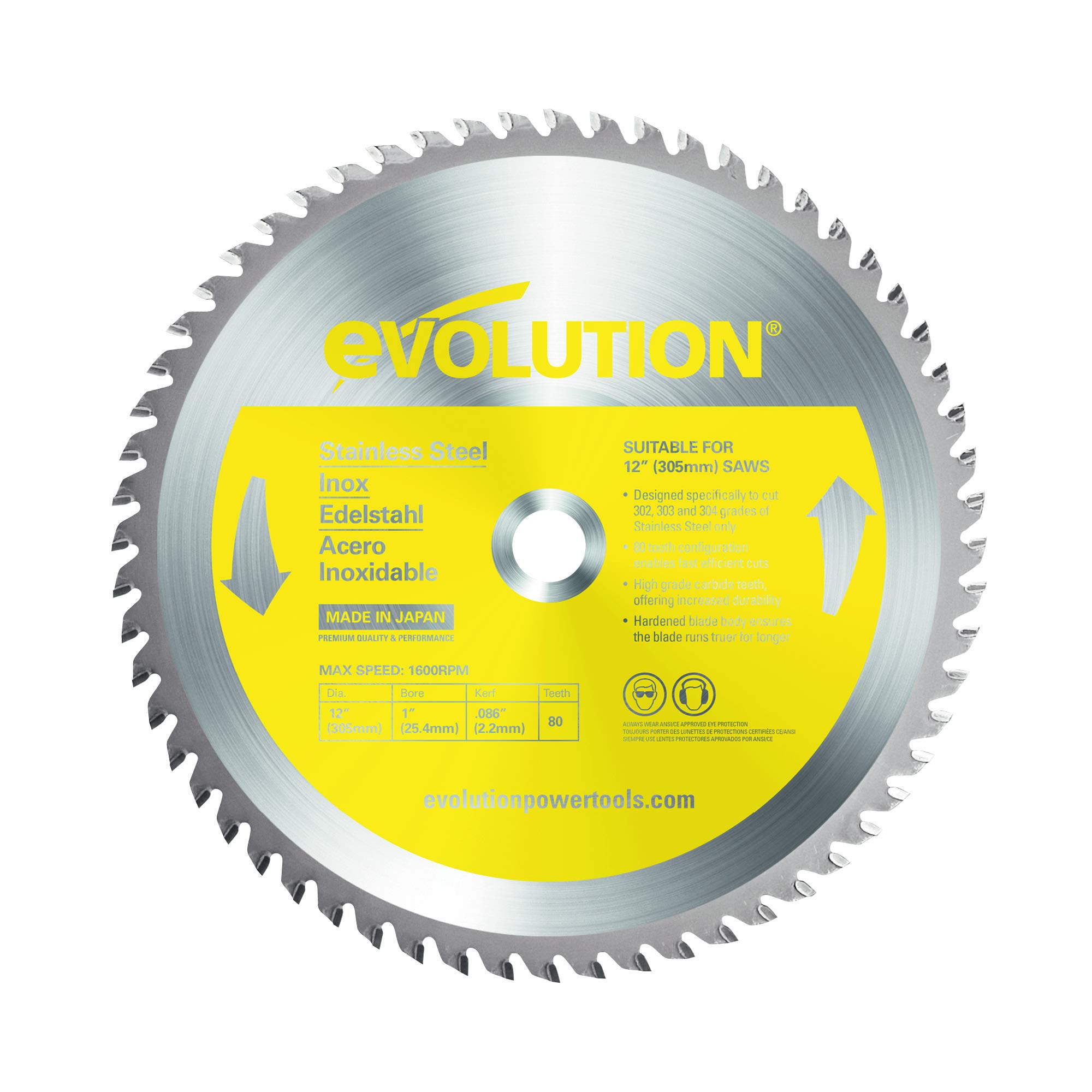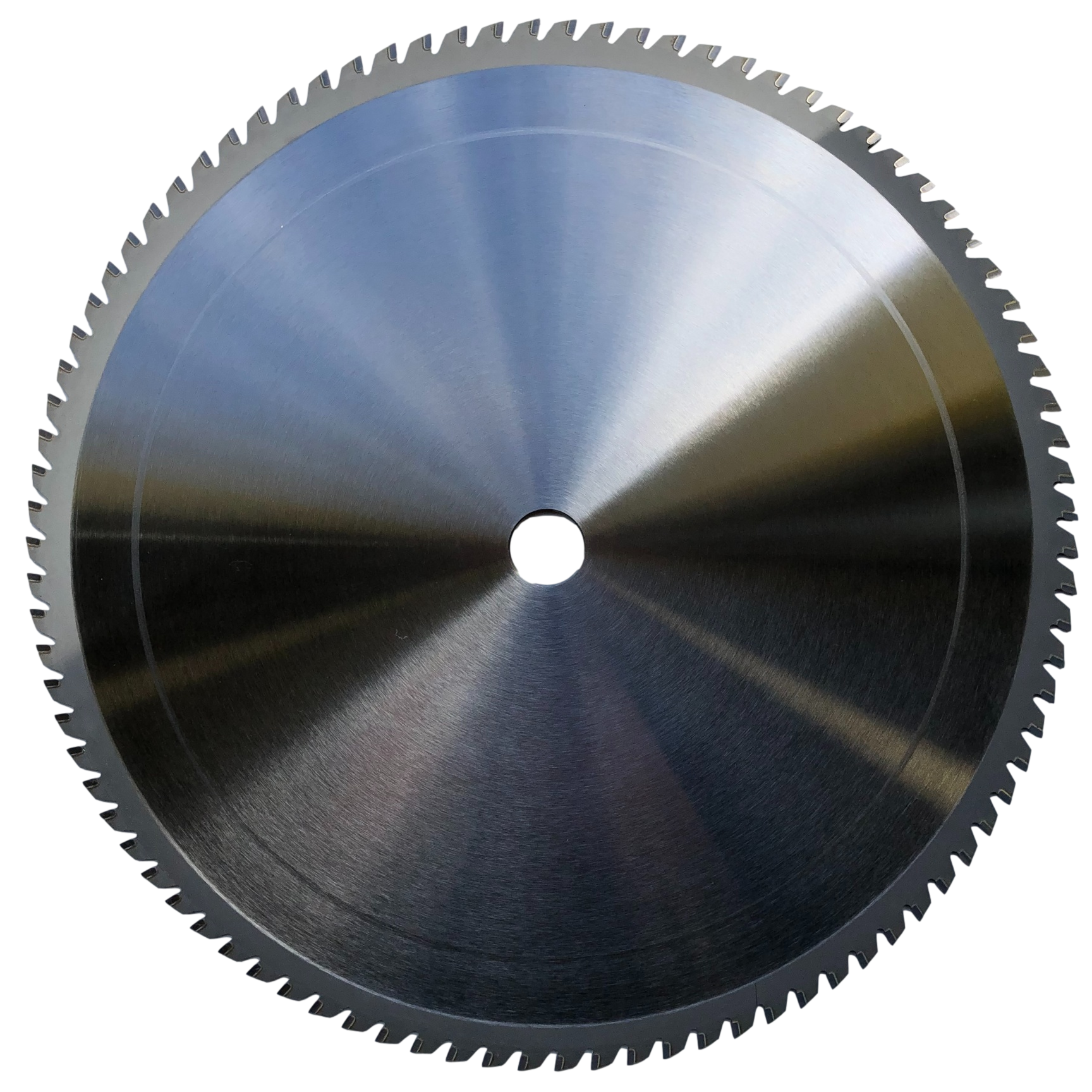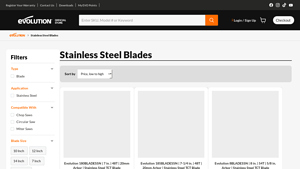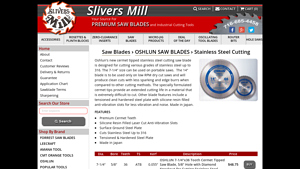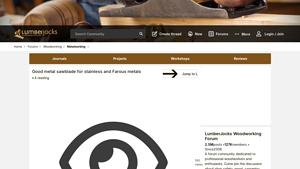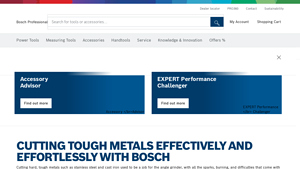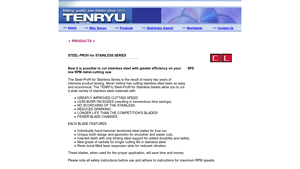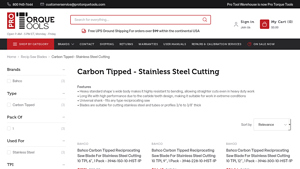Best Blade For Cutting Stainless Steel Guide: Type, Cost, Top List…
Introduction: Navigating the Global Market for best blade for cutting stainless steel
Navigating the intricate landscape of sourcing the best blade for cutting stainless steel can present a significant challenge for international B2B buyers. Stainless steel, prized for its strength and resistance to corrosion, demands specialized cutting tools that can handle its unique properties. This guide is designed to equip you with the knowledge necessary to make informed purchasing decisions, addressing essential factors such as blade types, applications, supplier vetting, and cost considerations.
From high-performance tungsten carbide-tipped blades to innovative cermet-tipped options, the market offers a variety of solutions tailored to different stainless steel grades, including the widely used 302, 303, and 304. Understanding the specific requirements of your projects—whether it’s for manufacturing, construction, or maintenance—ensures that you select the most effective cutting tools.
As an international buyer, particularly from regions such as Africa, South America, the Middle East, or Europe, you will find valuable insights into the best practices for sourcing, including how to evaluate suppliers based on quality, price, and reliability. This guide empowers you to navigate the complexities of the global market with confidence, enabling you to optimize your operations and achieve high-quality results in your stainless steel cutting endeavors.
Understanding best blade for cutting stainless steel Types and Variations
| Type Name | Key Distinguishing Features | Primary B2B Applications | Brief Pros & Cons for Buyers |
|---|---|---|---|
| Tungsten Carbide Tipped Blades | High durability, suitable for cutting grades 302, 303, 304 | Fabrication, construction, metalworking | Pros: Long lifespan, clean cuts. Cons: Higher initial cost. |
| Cermet Tipped Blades | Enhanced performance, minimal burrs, effective on up to 316 grades | Aerospace, automotive, heavy machinery | Pros: Reduced sparking, longer cutting life. Cons: Limited to specific saw types. |
| Cold Cut Saw Blades | Operate at lower RPM, designed for precision cutting | Metal fabrication, construction | Pros: Less heat and mess, cleaner cuts. Cons: Requires compatible saws. |
| Bi-Metal Bandsaw Blades | Flexible and tough, suitable for various stainless steel grades | Heavy-duty industrial cutting | Pros: Versatile, good for continuous use. Cons: Slower cutting speed. |
| Abrasive Cut-Off Wheels | Cost-effective, suitable for rough cuts | General metal cutting, repair shops | Pros: Affordable, widely available. Cons: Produces heat and sparks, shorter lifespan. |
What Are the Characteristics of Tungsten Carbide Tipped Blades for Cutting Stainless Steel?
Tungsten carbide tipped blades are engineered for durability and precision, making them ideal for cutting stainless steel grades 302, 303, and 304. Their carbide tips allow for cleaner cuts and less wear, making them suitable for applications in fabrication, construction, and metalworking. When purchasing, buyers should consider the initial investment against the blade’s longevity and performance in demanding environments.
Why Choose Cermet Tipped Blades for Stainless Steel Applications?
Cermet tipped blades utilize a blend of ceramic and metal materials, providing enhanced cutting performance and reduced burr formation. These blades are especially effective for cutting tougher grades of stainless steel, such as 316. They are commonly used in industries like aerospace and automotive. Buyers should evaluate the specific cutting requirements and compatibility with their saws, as these blades often require specific low RPM saws for optimal performance.
How Do Cold Cut Saw Blades Improve Cutting Precision?
Cold cut saw blades operate at lower RPMs, which significantly reduces heat generation and material distortion during the cutting process. This makes them particularly advantageous for metal fabrication and construction applications where precision is crucial. When selecting a cold cut saw blade, B2B buyers should ensure compatibility with their existing equipment and consider the blade’s size and tooth count for the specific material thickness being cut.
What Advantages Do Bi-Metal Bandsaw Blades Offer for Industrial Cutting?
Bi-metal bandsaw blades are designed with a flexible back and high-speed steel teeth, allowing them to handle various stainless steel grades effectively. They are favored in heavy-duty industrial applications due to their resilience and versatility. Buyers should assess the blade’s tooth design and pitch to match their cutting needs, as well as the operational environment to ensure optimal performance and longevity.
When to Use Abrasive Cut-Off Wheels for Stainless Steel?
Abrasive cut-off wheels are a cost-effective solution for rough cutting tasks in general metal cutting and repair shops. While they are widely available and affordable, they generate significant heat and sparks, which can affect the integrity of the stainless steel being cut. Buyers must weigh the benefits of low initial costs against the potential need for additional finishing processes to achieve clean cuts.
Key Industrial Applications of best blade for cutting stainless steel
| Industry/Sector | Specific Application of best blade for cutting stainless steel | Value/Benefit for the Business | Key Sourcing Considerations for this Application |
|---|---|---|---|
| Construction | Cutting stainless steel beams and reinforcements | Enhanced structural integrity and durability | Quality of the blade, compatibility with existing tools, and cutting speed. |
| Automotive | Fabrication of stainless steel components | Improved performance and longevity of vehicle parts | Material specifications, blade type (TCT vs. cermet), and cost-effectiveness. |
| Oil and Gas | Pipe cutting for pipelines and refineries | Safety and efficiency in harsh environments | Resistance to heat, compatibility with low RPM saws, and availability in bulk. |
| Food Processing | Cutting stainless steel equipment and fixtures | Compliance with hygiene standards and durability | Blade hygiene standards, ease of cleaning, and blade longevity. |
| Aerospace | Precision cutting of stainless steel parts for aircraft | Enhanced safety and performance under high stress | Precision specifications, certification standards, and supplier reliability. |
How is the Best Blade for Cutting Stainless Steel Used in Key Industries?
In the construction industry, the best blade for cutting stainless steel is essential for cutting beams and reinforcements used in structures. These blades provide clean cuts that enhance the structural integrity of buildings. Buyers in this sector must consider the blade’s compatibility with their existing tools and the required cutting speed to minimize downtime on-site, especially in regions like Africa and South America where project timelines are critical.
The automotive sector frequently utilizes stainless steel blades for fabricating components such as exhaust systems and chassis parts. The precision offered by these blades ensures that parts fit correctly, which is vital for vehicle performance and safety. B2B buyers should focus on the specific material grades compatible with the blades, such as TCT or cermet, to ensure optimal performance and cost-effectiveness in high-volume production environments.
In the oil and gas industry, cutting pipes made of stainless steel is a common application. The durability of these blades helps maintain safety and efficiency in challenging environments, such as offshore drilling sites. Buyers should prioritize blades that can withstand high temperatures and are compatible with low RPM saws to ensure safety during operations in regions like the Middle East, where extreme conditions prevail.
For the food processing industry, stainless steel blades are used for cutting equipment and fixtures that meet hygiene standards. The ability to produce clean cuts without introducing contaminants is crucial for compliance with health regulations. Buyers must look for blades that are easy to clean and maintain, as well as those that offer longevity to minimize replacement costs in European markets where food safety regulations are stringent.
In the aerospace sector, precision cutting of stainless steel parts is critical for aircraft manufacturing. The best blades for this application must meet high safety and performance standards, as they are subjected to extreme conditions. Buyers should consider the precision specifications and certification standards of the blades, ensuring they source from reliable suppliers who can meet the rigorous demands of the aerospace industry, particularly in regions with advanced aerospace manufacturing capabilities.
3 Common User Pain Points for ‘best blade for cutting stainless steel’ & Their Solutions
Scenario 1: Difficulty in Selecting the Right Blade for Various Stainless Steel Grades
The Problem: B2B buyers often face the challenge of selecting the appropriate blade for cutting different grades of stainless steel, such as 302, 304, and 316. Each grade has unique properties that affect cutting performance, including hardness and corrosion resistance. Without proper knowledge, businesses risk purchasing a blade that may not effectively cut the specific grade they intend to work with, leading to subpar results, increased wear on machinery, and ultimately higher operational costs.
The Solution: To effectively source the best blade for cutting stainless steel, it’s crucial to first understand the specific application and the stainless steel grades involved. Buyers should look for blades that are explicitly designed for the grades they will be working with. For instance, tungsten carbide-tipped (TCT) blades are often recommended for cutting 302 and 304 grades, while cermet-tipped blades might be more suitable for tougher 316 grades. When sourcing blades, consult with suppliers who offer detailed specifications and recommendations based on the material grades. Additionally, investing in a blade with anti-vibration technology can improve cutting accuracy and extend blade life, reducing costs in the long run.
Scenario 2: Inconsistent Cutting Quality and Increased Burr Formation
The Problem: Many B2B companies experience inconsistent cutting quality and excessive burr formation when using blades that are not optimized for stainless steel. This issue can lead to increased post-processing work, such as grinding or sanding, which not only consumes time but also adds to the overall production costs. Buyers often find themselves frustrated when the blades fail to deliver the clean cuts they require for high-quality finishes.
The Solution: To combat these issues, buyers should prioritize the selection of blades that are specifically engineered for stainless steel cutting. For example, blades with a higher tooth count are generally more effective at producing clean cuts with minimal burrs. Additionally, using blades with a specialized geometry, such as alternating top bevel (ATB) teeth, can enhance cutting performance by reducing friction and heat generation. Buyers should also consider incorporating cutting fluids or lubricants during the cutting process to minimize heat buildup, which can further reduce burr formation. Regular maintenance and timely replacement of blades based on usage metrics can also help maintain consistent cutting quality.
Scenario 3: Equipment Compatibility Issues Leading to Operational Downtime
The Problem: A common pain point for B2B buyers is the compatibility of cutting blades with existing equipment. Many businesses invest in high-quality blades only to discover that they do not fit their saws or that they operate at incompatible RPMs. This mismatch can lead to operational downtime, causing delays in production schedules and increased costs due to lost productivity.
The Solution: To avoid compatibility issues, buyers should meticulously verify the specifications of both their cutting equipment and the blades they intend to purchase. It is essential to check the arbor size, blade diameter, and recommended RPM ratings to ensure that the blade will function correctly with the existing machinery. When sourcing blades, opt for manufacturers that provide detailed compatibility charts and technical support. Additionally, consider investing in adjustable-speed saws that can accommodate various blades and materials. This flexibility not only mitigates compatibility issues but also enhances overall cutting efficiency, allowing businesses to adapt quickly to changing project requirements.
Strategic Material Selection Guide for best blade for cutting stainless steel
What Are the Best Materials for Blades Designed to Cut Stainless Steel?
When selecting blades for cutting stainless steel, the choice of material is critical to ensure performance, durability, and cost-effectiveness. Here, we analyze four common materials used in blade manufacturing, focusing on their properties, advantages, disadvantages, and implications for international B2B buyers.
Tungsten Carbide-Tipped (TCT) Blades
Key Properties: Tungsten carbide is renowned for its hardness and wear resistance, making it ideal for cutting tough materials like stainless steel. TCT blades typically have a high temperature rating and can withstand the heat generated during cutting.
Pros & Cons: The primary advantage of TCT blades is their durability and longevity, allowing for extended use without frequent replacements. However, they can be more expensive than other options, and manufacturing complexity may lead to longer lead times. Additionally, while TCT blades excel at cutting, they may be less effective in applications requiring intricate shapes.
Impact on Application: TCT blades are suitable for cutting various grades of stainless steel, particularly 302, 303, and 304. Their performance is optimal in applications requiring clean cuts with minimal burrs.
Considerations for International Buyers: Compliance with international standards like ASTM and DIN is crucial. Buyers in regions such as Africa and South America should ensure that suppliers adhere to these standards for quality assurance.
Cermet-Tipped Blades
Key Properties: Cermet blades combine ceramic and metal, offering excellent hardness and thermal stability. They can cut through stainless steel grades up to 316, making them versatile for different applications.
Pros & Cons: The key advantage of cermet blades is their ability to produce cleaner cuts with less sparking and edge burrs compared to traditional methods. However, they are generally more expensive, and their manufacturing process can be complex, which may affect availability.
Impact on Application: Cermet blades are particularly effective for high-precision cutting in industries such as aerospace and automotive, where material integrity is paramount.
Considerations for International Buyers: Buyers should consider local availability and support for cermet blades, as sourcing may vary significantly between regions. Understanding local market demands can also guide purchasing decisions.
High-Speed Steel (HSS) Blades
Key Properties: High-speed steel is known for its toughness and ability to withstand high temperatures without losing hardness. HSS blades are typically less brittle than carbide options.
Pros & Cons: The primary advantage of HSS blades is their cost-effectiveness and ease of sharpening, making them suitable for smaller operations. However, they may not last as long as TCT or cermet blades when cutting stainless steel, leading to higher replacement costs over time.
Impact on Application: HSS blades are suitable for less demanding applications where precision is not as critical. They can handle lighter cuts and are often used in workshops with varied cutting tasks.
Considerations for International Buyers: HSS blades are widely available, but buyers should ensure that they meet local quality standards. In regions with less established supply chains, the ability to source quality HSS blades can be a deciding factor.
Bi-Metal Blades
Key Properties: Bi-metal blades consist of a high-speed steel edge welded to a flexible steel backing, providing both durability and flexibility. They are designed to handle a range of materials, including stainless steel.
Pros & Cons: The flexibility of bi-metal blades allows for better control during cutting, reducing the risk of breakage. However, they may not be as effective for high-volume cutting, and their lifespan can be shorter compared to TCT or cermet blades.
Impact on Application: Bi-metal blades are ideal for applications requiring versatility, such as construction or maintenance tasks where different materials are encountered.
Considerations for International Buyers: For buyers in diverse markets, bi-metal blades offer a good balance of performance and cost. However, they should ensure that the blades meet regional standards for safety and performance.
Summary Table
| Material | Typical Use Case for best blade for cutting stainless steel | Key Advantage | Key Disadvantage/Limitation | Relative Cost (Low/Med/High) |
|---|---|---|---|---|
| Tungsten Carbide-Tipped (TCT) | Cutting 302, 303, 304 stainless steel grades | High durability and longevity | Higher cost and manufacturing complexity | High |
| Cermet-Tipped | High-precision cutting for aerospace and automotive | Cleaner cuts with less sparking | More expensive and complex to manufacture | High |
| High-Speed Steel (HSS) | General workshop applications with varied cutting tasks | Cost-effective and easy to sharpen | Shorter lifespan compared to other blades | Medium |
| Bi-Metal | Versatile applications in construction and maintenance | Flexibility and control during cutting | Shorter lifespan for high-volume cutting | Medium |
This strategic material selection guide provides essential insights for international B2B buyers, enabling informed decisions when selecting the best blades for cutting stainless steel.
In-depth Look: Manufacturing Processes and Quality Assurance for best blade for cutting stainless steel
What Are the Key Stages in the Manufacturing Process of Stainless Steel Cutting Blades?
The manufacturing of stainless steel cutting blades involves several critical stages, each designed to ensure the final product meets the rigorous demands of industrial applications.
Material Preparation: What Materials Are Used?
The first step in the manufacturing process is the selection and preparation of high-quality materials. Typically, the blades are made from high-speed steel or tungsten carbide. For blades designed to cut stainless steel, manufacturers often use specially formulated cermet tips, which are a composite of ceramic and metal, providing enhanced cutting performance and durability.
The raw materials undergo several processes including inspection for quality and composition. This step is crucial as the properties of the materials directly influence the blade’s performance.
Forming: How Are Blades Shaped and Sized?
After material preparation, the next stage is forming. This involves cutting the raw material into the desired shape and size, usually through methods such as laser cutting or stamping. Laser cutting offers precision and a clean edge, which is essential for the performance of the cutting blade.
The forming process also includes creating the teeth of the blade. The tooth design and configuration are critical for cutting efficiency and can vary based on the intended application—whether it be for cutting specific grades of stainless steel or other materials.
Assembly: What Steps Are Involved in Assembling the Blades?
Once the blade components are formed, they are assembled. This may involve welding or bonding the cermet tips to the steel body. Precision is vital during assembly to ensure that the tips are securely attached and aligned correctly, as any misalignment can lead to poor cutting performance and increased wear.
This stage often includes the incorporation of vibration-dampening features, such as silicone resin-filled slots, which help reduce noise and improve cutting accuracy.
Finishing: How Are Blades Treated for Optimal Performance?
The final manufacturing stage is finishing, which includes surface grinding and coating. Surface grinding ensures that the blade has a smooth finish, reducing friction during cutting and enhancing durability. Coatings, such as titanium nitride, may also be applied to further improve wear resistance and reduce cutting friction.
Quality checks are performed at this stage to ensure that the blades meet specific tolerances and performance standards before they are packaged and shipped.
What Quality Assurance Practices Are Followed in Blade Manufacturing?
Quality assurance is a crucial aspect of the manufacturing process for stainless steel cutting blades, ensuring that they meet international and industry-specific standards.
Which International Standards Should Buyers Be Aware Of?
Manufacturers typically adhere to international standards such as ISO 9001, which outlines requirements for a quality management system. This certification indicates that the manufacturer has established procedures for consistent quality control, from material selection to final product testing.
In addition to ISO certifications, industry-specific standards may also apply. For example, blades intended for use in certain applications may need to meet CE marking requirements in Europe or API standards in the oil and gas industry.
What Are the Key Quality Control Checkpoints?
Quality control in the manufacturing process involves several checkpoints:
-
Incoming Quality Control (IQC): This is the initial inspection phase where raw materials are tested for quality and specifications before they enter the production line.
-
In-Process Quality Control (IPQC): Throughout the manufacturing process, various tests are conducted to monitor the quality of the product at different stages. This can include checking dimensions, material hardness, and other critical parameters.
-
Final Quality Control (FQC): Before shipping, the finished blades undergo a final inspection to verify that they meet all required specifications and standards. Testing methods may include cutting performance tests and durability assessments.
How Can B2B Buyers Verify Supplier Quality Control?
For international B2B buyers, particularly those from Africa, South America, the Middle East, and Europe, verifying a supplier’s quality control practices is essential to ensure product reliability.
What Steps Can Buyers Take?
-
Conduct Supplier Audits: Requesting audits of the manufacturing facilities can provide insights into the processes and quality control measures in place. This can be done through third-party inspection services that specialize in manufacturing audits.
-
Request Quality Reports: Suppliers should be able to provide detailed quality control reports, including testing results and certifications. These documents can help buyers assess the reliability and consistency of the supplier’s products.
-
Check for Third-Party Certifications: Look for third-party certifications that validate the manufacturer’s adherence to international standards. Certifications from recognized bodies can enhance trust in the supplier’s quality management systems.
What Are the Unique Quality Control Considerations for International Buyers?
B2B buyers from different regions may face unique challenges in quality control. For instance, varying regulations and standards across countries can complicate the process of ensuring compliance.
How Can Buyers Navigate These Challenges?
Understanding the specific requirements of their local markets can help buyers make informed decisions. Engaging with local regulatory bodies or industry associations can provide valuable insights into compliance requirements.
Additionally, establishing strong communication channels with suppliers can facilitate better understanding and adherence to quality standards, ensuring that the products received meet expectations.
In summary, the manufacturing and quality assurance processes for stainless steel cutting blades are complex and multifaceted, requiring attention to detail and adherence to international standards. By understanding these processes and implementing thorough verification methods, B2B buyers can ensure they source high-quality cutting blades that meet their operational needs.
Practical Sourcing Guide: A Step-by-Step Checklist for ‘best blade for cutting stainless steel’
Introduction
This guide provides B2B buyers with a practical checklist for sourcing the best blades for cutting stainless steel. Selecting the right blade is critical for ensuring efficiency, cost-effectiveness, and quality in metalworking operations. By following these steps, buyers can make informed decisions that enhance their cutting processes and overall productivity.
Step 1: Define Your Technical Specifications
Establishing clear technical specifications is the foundation of your sourcing process. Consider the specific grades of stainless steel you will be cutting (such as 302, 303, or 316) and the required blade size, tooth count, and kerf thickness. These details will help narrow down your options and ensure compatibility with your cutting equipment.
- Key Considerations:
- Blade diameter and arbor size must match your saw.
- Tooth count affects the cut quality and speed.
Step 2: Research Blade Types and Materials
Understanding the different blade types and materials available for cutting stainless steel is vital. Tungsten carbide-tipped (TCT) blades are preferred for their durability and ability to maintain sharpness. Cermet-tipped blades also offer extended life and clean cuts, particularly useful for tougher grades of stainless steel.
- Material Options:
- TCT Blades: Best for high-speed applications.
- Cermet Blades: Ideal for precision and less heat generation.
Step 3: Evaluate Potential Suppliers
Before committing to a supplier, it is essential to conduct thorough evaluations. Look for manufacturers with a strong reputation in the industry and experience in producing blades specifically designed for stainless steel. Request case studies and references from similar businesses to assess their reliability.
- Evaluation Criteria:
- Supplier certifications (e.g., ISO).
- Client testimonials and case studies.
Step 4: Analyze Pricing and Cost-Effectiveness
While price is an important factor, it should not be the sole determinant of your purchasing decision. Compare the total cost of ownership, which includes blade longevity, maintenance, and the quality of cuts produced. A more expensive blade may save money in the long run due to fewer replacements and less downtime.
- Cost Considerations:
- Assess warranties and return policies.
- Factor in shipping and handling costs.
Step 5: Review Technical Support and After-Sales Service
Reliable technical support and after-sales service are critical for resolving any issues that may arise during blade usage. Ensure that your supplier offers comprehensive support, including installation guidance and troubleshooting assistance. This will enhance operational efficiency and reduce potential downtime.
- Support Features:
- Availability of customer service representatives.
- Access to online resources and manuals.
Step 6: Request Samples or Trial Blades
Before making a bulk purchase, request samples or trial blades to evaluate performance in your specific application. Testing allows you to assess the blade’s cutting efficiency, durability, and finish quality on your stainless steel materials. This step can significantly reduce the risk of dissatisfaction with your order.
- Testing Considerations:
- Perform cuts on various grades of stainless steel.
- Evaluate the blade’s performance under different conditions.
Step 7: Finalize Your Purchase Agreement
Once you have completed your due diligence, it’s time to finalize the purchase agreement. Ensure that all terms, including delivery timelines, payment terms, and warranty conditions, are clearly outlined. This protects both parties and ensures a smooth transaction.
- Contract Essentials:
- Clearly defined payment terms.
- Delivery schedules and penalties for delays.
By following this checklist, B2B buyers can confidently source the best blades for cutting stainless steel, leading to improved operational performance and enhanced product quality.
Comprehensive Cost and Pricing Analysis for best blade for cutting stainless steel Sourcing
What Are the Key Cost Components for Stainless Steel Cutting Blades?
Understanding the cost structure of stainless steel cutting blades is crucial for B2B buyers looking to optimize their procurement strategies. The primary cost components include:
-
Materials: The quality of the steel and the type of cutting tips (e.g., tungsten carbide or cermet) significantly affect the cost. Higher-grade materials often lead to increased durability and cutting efficiency but come with a higher price tag.
-
Labor: Skilled labor is essential for precision manufacturing, particularly when producing specialized blades. Labor costs vary by region and can impact overall pricing, especially in countries with higher wage standards.
-
Manufacturing Overhead: This includes expenses related to factory operations, utilities, and maintenance. Efficient manufacturing processes can lower overhead costs, making it essential for suppliers to maintain competitive pricing.
-
Tooling: The investment in specialized tooling for blade production can be substantial. Suppliers often spread these costs across multiple units, which can influence pricing based on the volume of the order.
-
Quality Control (QC): Rigorous QC processes ensure that blades meet performance specifications. While this can add to manufacturing costs, it is vital for maintaining quality standards and reducing returns.
-
Logistics: Shipping and handling costs are significant, especially for international orders. Factors like distance, shipping methods, and import/export tariffs can vary widely and impact the final cost.
-
Margin: Suppliers typically include a profit margin in their pricing. Understanding market conditions and competitive pricing can help buyers negotiate better deals.
How Do Price Influencers Impact Sourcing Decisions?
Several key factors influence the pricing of stainless steel cutting blades, which buyers should consider:
-
Volume/MOQ: Minimum order quantities can affect pricing. Larger orders may qualify for bulk discounts, leading to significant cost savings.
-
Specifications/Customization: Custom blades tailored to specific applications may incur higher costs due to additional engineering and manufacturing processes. Buyers should assess whether the customization is necessary or if standard options suffice.
-
Materials: Premium materials enhance performance but come at a higher cost. Assessing the trade-off between price and performance is crucial for decision-making.
-
Quality/Certifications: Blades that meet international quality standards (like ISO certifications) may command higher prices. However, investing in certified products can lead to lower Total Cost of Ownership (TCO) due to improved longevity and reduced failure rates.
-
Supplier Factors: The reputation and reliability of the supplier play a significant role in pricing. Established suppliers may offer better warranties and support, justifying higher prices.
-
Incoterms: Understanding shipping terms and responsibilities (Incoterms) is essential for international buyers. Different terms can affect total landed costs, including customs duties and taxes.
What Are the Best Buyer Tips for Cost-Efficiency?
For international B2B buyers, particularly in regions like Africa, South America, the Middle East, and Europe, several strategies can enhance cost-efficiency:
-
Negotiate: Don’t hesitate to negotiate prices, especially for larger orders. Building a relationship with suppliers can lead to better terms and discounts.
-
Evaluate Total Cost of Ownership (TCO): Consider not just the purchase price but the long-term costs associated with maintenance, replacement, and operational efficiency. A higher initial investment in a durable blade may save costs over time.
-
Understand Pricing Nuances: Be aware of regional pricing differences and market dynamics. For instance, shipping costs can vary significantly based on location, impacting overall pricing.
-
Leverage Local Suppliers: Where possible, sourcing from local suppliers can reduce shipping costs and lead times, enhancing overall supply chain efficiency.
-
Stay Informed on Market Trends: Keep abreast of changes in material costs, technological advancements, and supplier market conditions. This knowledge can inform better purchasing decisions and timing.
Disclaimer on Indicative Prices
The prices referenced in this analysis are indicative and may vary based on supplier, region, and market conditions. Buyers should conduct thorough research and obtain quotes from multiple suppliers to ensure competitive pricing tailored to their specific needs.
Alternatives Analysis: Comparing best blade for cutting stainless steel With Other Solutions
Understanding Alternatives for Cutting Stainless Steel
In the realm of industrial cutting, selecting the right tool is crucial for efficiency and precision. While specialized blades for cutting stainless steel offer significant advantages, there are alternative methods and technologies that can also effectively serve the same purpose. This section provides a comparative analysis of the best blade for cutting stainless steel against other viable solutions, allowing B2B buyers to make informed decisions based on their specific needs and operational contexts.
Comparison Table
| Comparison Aspect | Best Blade For Cutting Stainless Steel | Plasma Cutting | Water Jet Cutting |
|---|---|---|---|
| Performance | High precision, clean cuts | Excellent for thick materials, fast cutting | Extremely precise, clean edges |
| Cost | Moderate ($48 – $171) | High initial investment, operational costs vary | Very high due to equipment and maintenance |
| Ease of Implementation | Simple installation on compatible saws | Requires skilled operators and setup | Complex setup and operation |
| Maintenance | Low; replaceable blades | Moderate; requires regular maintenance | High; requires specialized service |
| Best Use Case | Ideal for small to medium stainless steel projects | Best for heavy-duty applications, thick plates | Best for intricate designs, non-thermal cutting |
Detailed Breakdown of Alternatives
Plasma Cutting
Plasma cutting is a widely used method for cutting stainless steel, particularly in industrial settings where speed and efficiency are paramount. It utilizes a high-velocity jet of ionized gas (plasma) to melt and remove material. The primary advantage of plasma cutting is its ability to handle thick materials rapidly. However, it requires a higher initial investment in equipment and ongoing operational costs due to electricity and gas consumption. Additionally, skilled operators are necessary to ensure precision and safety during the process.
Water Jet Cutting
Water jet cutting employs high-pressure water, often mixed with abrasives, to slice through stainless steel. This method is renowned for its precision, making it suitable for intricate designs and detailed cuts. The absence of heat in the cutting process prevents material distortion, which is a significant advantage over thermal cutting methods. However, the initial investment for water jet cutting equipment is substantial, and operational costs can also be high due to maintenance and specialized training for operators. This method is best suited for projects that require detailed work and precision, where the cost can be justified.
Conclusion: Choosing the Right Solution for Cutting Stainless Steel
When selecting the appropriate cutting solution for stainless steel, B2B buyers must consider several factors, including the scale of their operations, budget constraints, and the specific requirements of their projects. While specialized blades for cutting stainless steel offer an efficient and cost-effective solution for small to medium tasks, methods like plasma and water jet cutting provide alternatives that excel in speed and precision for larger or more complex jobs. Ultimately, the choice will depend on balancing performance, cost, ease of use, and maintenance needs to align with the operational goals and capabilities of the business.
Essential Technical Properties and Trade Terminology for best blade for cutting stainless steel
When selecting the best blade for cutting stainless steel, understanding the essential technical properties and trade terminology is crucial for making informed purchasing decisions. Below are key specifications and common jargon that will aid B2B buyers in their selection process.
What Are the Key Technical Properties of Stainless Steel Cutting Blades?
-
Material Grade
The material grade of the blade directly impacts its cutting performance and durability. Blades designed for stainless steel often feature tungsten carbide tips (TCT) or cermet (ceramic-metal) tips. TCT blades are suitable for softer grades like 302, 303, and 304, while cermet blades can handle tougher grades like 316. Understanding the material grade helps ensure compatibility with the stainless steel you are cutting, which is vital for efficiency and safety. -
Tooth Count
The number of teeth on a blade affects the quality and speed of the cut. Blades with higher tooth counts (e.g., 66T or 90T) generally produce smoother cuts but may cut slower, making them ideal for precision work. Conversely, blades with fewer teeth (e.g., 36T) remove material faster but may lead to rougher edges. Selecting the appropriate tooth count is crucial for the desired finish and productivity. -
Kerf Width
The kerf refers to the width of the cut made by the blade. A narrower kerf (e.g., 0.055 inches) minimizes material loss, making it ideal for projects where material conservation is important. In contrast, a wider kerf (e.g., 0.094 inches) may be necessary for thicker materials. Understanding kerf width is essential for calculating material usage and ensuring the blade matches your cutting needs. -
Arbor Size
The arbor size is the hole in the center of the blade that fits onto the saw spindle. Common sizes include 20mm and 1 inch. Ensuring compatibility with your cutting equipment is vital to avoid operational delays and equipment damage. Knowing the correct arbor size is a fundamental step in the purchasing process. -
Maximum RPM
Each blade has a maximum revolutions per minute (RPM) rating that indicates how fast it can safely operate. Exceeding this limit can lead to blade failure or safety hazards. For stainless steel cutting, lower RPMs are often recommended to reduce heat buildup and extend blade life. Familiarity with maximum RPM is essential for safe and effective operations.
What Common Trade Terms Should B2B Buyers Know?
-
OEM (Original Equipment Manufacturer)
This term refers to companies that produce parts and equipment that may be marketed by another manufacturer. When sourcing blades, knowing if they are OEM can assure you of quality and compatibility with your existing machinery. -
MOQ (Minimum Order Quantity)
MOQ indicates the smallest number of units that a supplier is willing to sell. Understanding MOQ is crucial for budgeting and inventory management, especially for companies looking to minimize upfront costs. -
RFQ (Request for Quotation)
An RFQ is a document sent to suppliers to solicit price quotes for specific products or services. Using RFQs can help you compare prices and terms from multiple suppliers, ensuring you get the best deal for your stainless steel cutting blades. -
Incoterms
These are international commercial terms that define the responsibilities of buyers and sellers in a transaction, including shipping and logistics. Familiarity with Incoterms is essential for international buyers to understand their obligations and costs related to transport. -
TCT (Tungsten Carbide Tipped)
This term describes blades that have tips made from tungsten carbide, a material known for its hardness and durability. TCT blades are particularly suited for cutting hard materials like stainless steel, making them a popular choice in industrial applications. -
Cermet
Cermet refers to a composite material made from ceramic and metallic materials, offering benefits like increased cutting life and reduced heat buildup. Understanding this term can help buyers select blades that will perform well under demanding conditions.
By grasping these technical properties and trade terms, B2B buyers can enhance their decision-making process when sourcing the best blades for cutting stainless steel, ensuring optimal performance and cost-effectiveness in their operations.
Navigating Market Dynamics and Sourcing Trends in the best blade for cutting stainless steel Sector
What Are the Key Market Dynamics and Trends Influencing the Best Blade for Cutting Stainless Steel?
The global market for blades designed for cutting stainless steel is driven by several key factors, including the rising demand for stainless steel in various industries such as construction, automotive, and manufacturing. As economies in regions like Africa, South America, the Middle East, and Europe continue to develop, the construction sector’s growth fuels the need for high-quality cutting tools. Additionally, advancements in blade technology, such as the introduction of tungsten carbide-tipped (TCT) and cermet-tipped blades, are enhancing cutting efficiency and longevity, making them increasingly popular among B2B buyers.
Emerging trends indicate a shift towards precision cutting technologies that reduce waste and improve operational efficiency. B2B buyers are increasingly looking for blades that not only offer high performance but also minimize dust and heat during operation. This is particularly relevant in markets where labor costs are high, as tools that improve cutting speed and accuracy can significantly lower overall project costs. Furthermore, the integration of smart technology, such as IoT-enabled tools that monitor blade wear and performance, is beginning to take root, providing buyers with actionable data to optimize their operations.
How Does Sustainability Impact the Sourcing of Blades for Cutting Stainless Steel?
Sustainability has become a critical focus for B2B buyers, particularly in regions where environmental regulations are tightening. The production and disposal of cutting tools have significant environmental impacts, making it essential for businesses to consider eco-friendly options. Suppliers that prioritize sustainable practices, such as using recycled materials in blade production or employing energy-efficient manufacturing processes, are increasingly favored.
The importance of ethical sourcing cannot be overstated. Buyers are now more inclined to partner with suppliers who demonstrate transparency in their supply chains, ensuring that raw materials are sourced responsibly. Certifications such as ISO 14001 for environmental management and other green certifications can enhance a supplier’s credibility. Moreover, blades made from sustainable materials not only reduce environmental impact but also align with the growing consumer demand for eco-friendly products, making them a compelling choice for B2B buyers.
What is the Historical Evolution of Blades for Cutting Stainless Steel?
The history of blades for cutting stainless steel dates back to the early 20th century when stainless steel itself was first developed. Initially, cutting tools were primarily made from high-speed steel (HSS), which proved inadequate for the hardness and toughness of stainless steel. The introduction of carbide-tipped blades in the mid-20th century marked a significant advancement, allowing for more efficient cutting and longer tool life.
In recent decades, the evolution has continued with the development of specialized blades featuring advanced materials like cermet and high-performance coatings that enhance cutting efficiency and reduce wear. These innovations have transformed the market, allowing for faster, cleaner cuts and enabling manufacturers to meet the increasing demand for precision in various applications. Today, the focus is on optimizing performance through technology while also addressing sustainability concerns, indicating a dynamic market that continually adapts to meet the needs of B2B buyers globally.
Frequently Asked Questions (FAQs) for B2B Buyers of best blade for cutting stainless steel
-
How do I choose the right blade for cutting stainless steel?
Choosing the right blade for cutting stainless steel involves understanding the specific grades of stainless steel you will be working with. Look for blades designed for 302, 303, or 304 stainless steel, as these are commonly used in various applications. Additionally, consider the blade’s tooth count and kerf width; higher tooth counts generally provide smoother cuts but may cut slower. Always ensure compatibility with your cutting equipment and evaluate the manufacturer’s recommendations for best results. -
What is the best type of blade for cutting stainless steel?
The best type of blade for cutting stainless steel is typically a tungsten carbide-tipped (TCT) blade or a cermet-tipped blade. TCT blades offer durability and resistance to wear, making them suitable for cutting various stainless steel grades. Cermet blades, which combine ceramic and metal, provide a longer cutting life and cleaner cuts with less sparking. Always select a blade that matches the specific grade of stainless steel and your cutting tool specifications. -
What factors should I consider when sourcing blades internationally?
When sourcing blades internationally, consider the manufacturer’s reputation, product certifications, and compliance with international standards. It’s essential to evaluate shipping costs, customs regulations, and import duties that may apply in your region. Additionally, assess the supplier’s reliability regarding delivery times and after-sales support. Conducting thorough due diligence, including customer reviews and references, can help mitigate risks associated with international procurement. -
What minimum order quantities (MOQs) should I expect when purchasing blades?
Minimum order quantities (MOQs) for blades can vary significantly based on the supplier and the type of blade. Typically, MOQs may range from a few units to hundreds, depending on the manufacturer’s production capabilities and your specific requirements. Discussing your needs with suppliers can lead to negotiation on MOQs, especially if you are looking for customization or bulk orders. Always confirm MOQs before placing orders to ensure they align with your budget and inventory needs. -
How do I ensure the quality of stainless steel cutting blades?
To ensure the quality of stainless steel cutting blades, verify the manufacturer’s certifications, such as ISO or other relevant quality standards. Request samples for testing and assess the blade’s performance on the specific materials you intend to cut. Regularly review the supplier’s quality assurance processes and product testing protocols. Additionally, seek feedback from other buyers regarding the durability and reliability of the blades to make an informed decision. -
What payment terms should I negotiate when sourcing blades?
When sourcing blades, negotiate payment terms that align with your cash flow and risk tolerance. Common terms include advance payments, net 30, or net 60 days, depending on your relationship with the supplier. Consider using letters of credit for larger orders to provide security for both parties. Always ensure clarity on payment methods and conditions to avoid disputes and ensure smooth transactions. -
How can I customize stainless steel cutting blades for my specific needs?
Customization options for stainless steel cutting blades typically include adjustments to size, tooth count, and material specifications. Discuss your requirements with the supplier, as many manufacturers offer bespoke solutions to meet particular cutting applications. Ensure that you provide detailed specifications and any necessary testing parameters to ensure that the customized blades perform effectively in your operations. -
What logistics considerations should I keep in mind when importing blades?
When importing blades, consider logistics factors such as shipping methods, delivery times, and packaging to prevent damage during transit. Evaluate the reliability of the freight forwarder and ensure they understand customs regulations for your region. Additionally, plan for potential delays at customs and ensure all documentation is in order, including invoices and certificates of origin. Having a clear logistics strategy can help ensure timely delivery and mitigate unforeseen costs.
Important Disclaimer & Terms of Use
⚠️ Important Disclaimer
The information provided in this guide, including content regarding manufacturers, technical specifications, and market analysis, is for informational and educational purposes only. It does not constitute professional procurement advice, financial advice, or legal advice.
While we have made every effort to ensure the accuracy and timeliness of the information, we are not responsible for any errors, omissions, or outdated information. Market conditions, company details, and technical standards are subject to change.
B2B buyers must conduct their own independent and thorough due diligence before making any purchasing decisions. This includes contacting suppliers directly, verifying certifications, requesting samples, and seeking professional consultation. The risk of relying on any information in this guide is borne solely by the reader.
Top 8 Best Blade For Cutting Stainless Steel Manufacturers & Suppliers List
1. Evolution – 180BLADESSN 7 Blade for Stainless Steel
Domain: store.evolutionpowertools.com
Registered: 2000 (25 years)
Introduction: [{‘name’: ‘Evolution 180BLADESSN’, ‘size’: ‘7 in.’, ‘teeth’: ’48T’, ‘arbor’: ’20mm’, ‘price’: ‘$48.00’, ‘application’: ‘Designed specifically to cut 302, 303 & 304 grades of Stainless Steel only.’, ‘compatible_with’: ‘Evolution EVOSAW180HD, RAGE-B, RAGE4, Jancy MCSL07’}, {‘name’: ‘Evolution 185BLADESSN’, ‘size’: ‘7-1/4 in.’, ‘teeth’: ’48T’, ‘arbor’: ’20mm’, ‘price’: ‘$48.00’, ‘application’: ‘Desig…
2. Jump Ring Cutter – Mini Table Saw
Domain: reddit.com
Registered: 2005 (20 years)
Introduction: Jump ring cutter, mini table saw, uses thin jeweler’s saw blade, blade cost: $20 each, blade longevity: 1 pound of rings per 2 blades, recommended RPM: 200, max RPM: 800, coolant used.
3. OSHLUN – 7-1/4 Cermet Tipped Saw Blade
Domain: sliversmill.com
Registered: 2002 (23 years)
Introduction: {“products”:[{“name”:”OSHLUN 7-1/4\” x 36 Tooth Cermet Tipped Saw Blade”,”size”:”7-1/4\””,”bore”:”5/8\””,”teeth”:”36 ATB”,”kerf”:”0.055\””,”description”:”OSHLUN 7-1/4\”x36 Tooth Cermet Tipped Saw Blade, 5/8\” Hole with Diamond Knockout for Cutting Stainless Steel”,”price”:”$48.75″,”model”:”SBFS-072536″,”shipping”:”This item qualifies for FREE SHIPPING in the US on orders over $49″},{“name”:”OSHLUN…
4. Evolution – 10BLADESSN Cutting Blade
Domain: lumberjocks.com
Registered: 2005 (20 years)
Introduction: Evolution 10BLADESSN | 10 in. | 66T | 1 in. Arbor | Tungsten Carbide Tipped Stainless Steel Cutting Blade—designed to cut stainless steel grades 302, 303 & 304 only.
5. Bosch – Carbide-Tipped Metal Cutting Accessories
Domain: bosch-professional.com
Registered: 2008 (17 years)
Introduction: Bosch offers a range of metal cutting accessories featuring Carbide Technology designed for cutting tough metals like stainless steel and cast iron. These carbide-tipped blades are engineered for durability, cutting speed, and longevity compared to Bi-Metal blades. The accessories are tailored to match the type of metal and the specific cutting needs, including jigsaws, reciprocating saws, and osc…
6. Tenryu America, Inc. – Steel-Pro® for Stainless Series
Domain: tenryu.com
Registered: 1997 (28 years)
Introduction: {“brand”: “Tenryu America, Inc.”, “product_line”: “Steel-Pro® for Stainless Series”, “description”: “Blades designed for cutting stainless steel with greater efficiency on low RPM metal-cutting saws.”, “features”: [“Greatly improved cutting speed”, “Less burr on edges”, “No scorching of the stainless”, “Reduced sparking”, “Longer life than the competition’s blades”, “Fewer blade changes”], “blade_…
7. Bahco – Carbon Tipped Reciprocating Saw Blades
Domain: protorquetools.com
Registered: 2008 (17 years)
Introduction: Product: Carbon Tipped Reciprocating Saw Blades for Stainless Steel Cutting
Brand: Bahco
Types Available: 10 TPI
Sizes Available: 6″, 9″, 12″
Pack Size: 1 Pack
Features:
– Heavy standard shape’s wide body for resistance to bending, ensuring straighter cuts in heavy duty work.
– Long life and high performance due to carbide teeth design, suitable for extreme conditions.
– Universal shank fits any …
8. Facebook – Versatile Cutting Solutions
Domain: facebook.com
Registered: 1997 (28 years)
Introduction: This company, Facebook – Versatile Cutting Solutions, is a notable entity in the market. For specific product details, it is recommended to visit their website directly.
Strategic Sourcing Conclusion and Outlook for best blade for cutting stainless steel
In evaluating the best blades for cutting stainless steel, international B2B buyers must prioritize quality, compatibility, and cost-effectiveness. Blades specifically designed for stainless steel, such as those from Evolution and Oshlun, offer distinct advantages, including extended cutting life and reduced heat generation. Investing in tungsten carbide tipped (TCT) or cermet tipped blades not only enhances performance but also ensures cleaner cuts with minimal edge burrs—critical factors for maintaining high production standards.
Strategic sourcing plays a vital role in optimizing procurement processes, enabling buyers to secure reliable suppliers who understand the unique demands of stainless steel applications. By leveraging partnerships with manufacturers that provide specialized blades for various grades of stainless steel, businesses can improve operational efficiency and reduce downtime.
Looking ahead, the demand for high-quality cutting tools is poised to grow, particularly in emerging markets across Africa, South America, the Middle East, and Europe. Buyers should actively seek out innovative products that meet their specific cutting requirements. Engaging with trusted suppliers will be essential in navigating this competitive landscape and positioning your business for future success. Prioritize sourcing strategies that not only enhance productivity but also contribute to long-term sustainability in your operations.
